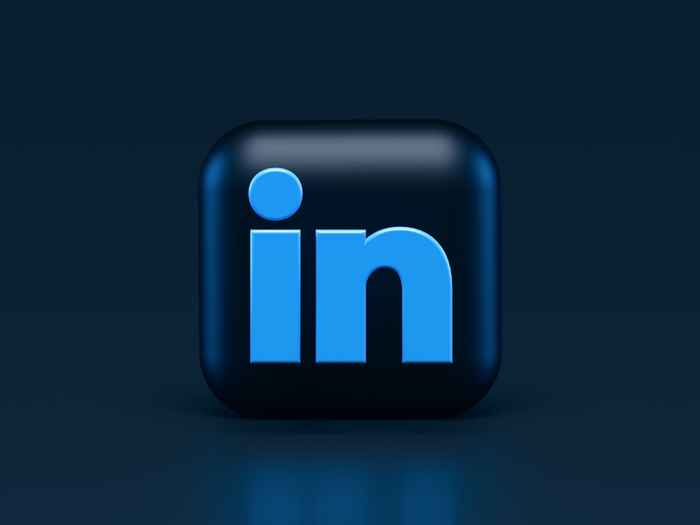How to create a product page on LinkedIn
Learn how to create and use LinkedIn product pages to build awareness around your brand and its products.
Your work experience, skills, and professional story can all play a role in telling your brand story, and while it may seem strange, it’s crucial to spend time marketing and selling yourself. Whether you’re actively searching for a new job, expanding your professional network, or looking to build your personal brand, optimizing your LinkedIn profile is a great way to get noticed and help reach your professional goals.
Similar to and different from other social networks, LinkedIn is a great marketing platform for your personal brand, work experience, and professional expertise. More than 90% of recruiters use LinkedIn as their primary platform to search for talent.
Here are 16 ways to optimize your profile for LinkedIn searches and search results, helping to boost your personal brand and get you seen by recruiters.
Your profile picture is the first thing people will see when they search for you on LinkedIn or view your profile. This virtual, visual introduction is the other person’s first impression of you, so you want to make sure it’s a good one.
While the photo doesn’t have to be taken by a professional photographer, you should still look professional, authentic, inviting, and confident.
Like your profile picture, the background photo can be one of the first things someone notices about your profile. One of the only other visual elements, it can grab someone's attention, help you stand out, and showcase something about you. You can choose a relevant image, or create an image with your contact information, website, or personal brand statement.
Your profile’s headline should be viewed as a description of your overall profile. While many choose to set this as just a job title, you can use this field to share a bit more about you, your role, what you do, and what motivates you. Don’t be afraid to make it catchy, but keep it relevant and impactful and optimize it with industry keywords. For inspiration, find mentors or other professionals in your field of work to see what their headlines are.
Don’t leave this field blank. Your profile’s summary is a great place to write a few sentences that will make your profile stand out from others. Go beyond listing your skills or other job titles, or a summary statement of what you’re looking for in another job. Instead, bring your skills and experience to life. Make it personal and be creative with how you tell your brand story, and be authentic about yourself and what you do.
For example:
Start with the job title - make sure it accurately and quickly describes what you do. If your title is uncommon, you may want to put an equivalent job title in brackets next to it to help with search rankings.
Next, fill up the free space that allows you to elaborate further on your job duties. Share the overall scope of your work and highlight or summarize your core responsibilities, and then list 3-5 key points that support your efforts or success. Use specific examples or results if you can.
Keep in mind that you don’t have to list every job you ever had. The experience should be relevant, and if you have a long history, focus on the most recent or those with the best achievements in your career.
Add publications, projects, or other featured media and collateral that you produce to help you stand out and build your personal brand. Showcasing your work on your profile can give recruiters and businesses great insight into how you work and what they can expect if they hire you.
You can also create your own thought leadership posts with insights, information, or thoughts related to what you do. The more you share and comment, the more you establish your expertise. Long-form posts, similar to blog posts, can help you do this. Start conversations with your followers and engage with their comments, and use this platform as a place to showcase your experience and knowledge.
By following and engaging with relevant influencers and thought leaders in your industry, not only will you populate your feed with interesting and informative content, but you’ll also be adding context to your profile and highlighting your passion for what you do. When you follow or engage with these people, it appears in your “activity” and “interests” sections, which can help tell a deeper story about you as a person and your thoughts about your industry.
Share white papers, case studies, blog articles, and other content from thought leaders, brands, and others who you admire. It will help demonstrate passion and commitment to your field and show you’re engaged and up-to-date with your industry.
The “skills” section of your profile is a great way to share and highlight skills that are relevant to you and your work experience. Plus, because others have the opportunity to endorse you and those skills, it can help potential employers feel more confident in what you bring to the table. Be sure to keep these skills relevant instead of listing everything you can think of, and review the list every so often to ensure they remain relevant.
Endorsements of your skills are important and can help highlight your expertise from others who have worked with you. While you can politely ask current or previous coworkers to endorse your skills, you can also generate endorsements on your own profile by endorsing others. By helping others with their profiles, they may feel more inclined to help you.
Another way to showcase your skills is by taking a skills quiz, an online assessment that allows you to share your knowledge and skills and shows as a Verified Skills badge on your profile. According to LinkedIn, users with verified skills are around 30% more likely to be hired for roles they apply for since it helps prove their abilities and strengths.
Choose from various courses to help expand your knowledge and skills, and highlight your passion for learning by adding course certificates to your profile.
This optimization is a little more advanced, but you can edit the URL for your profile to be more clean and easy to share, and it helps with search engine optimization. For example, you can update it to be your first and last name.
In the upper right corner of your profile, select “Edit public profile & URL” You can then change the URL to something else.
Search engine optimization can help your profile be more visible to those who search for you or content that you post about. Think about keywords related to your industry that people may be searching for, and strategically insert them in your headline, summary, job descriptions, and content you produce.
Too many buzzwords in your headline, summary, and other profile elements won’t necessarily convince someone you have these qualities and skills. Instead of using buzzwords like focused, strategic, experienced, passionate, expert, certified, leader, and specialized, use the different parts of your profile to show – not tell – that you embody them. Not that you can’t use any of these words at all, but telling a story and describing your experience and expertise can be more impactful.
Learn how to create and use LinkedIn product pages to build awareness around your brand and its products.
A content marketing strategy and sharing on LinkedIn can help people and brands establish expertise and authority while engaging with audiences. Here are tips to get started.
The ultimate guide for creating a successful company page on LinkedIn, the world's largest professional network on the internet.




